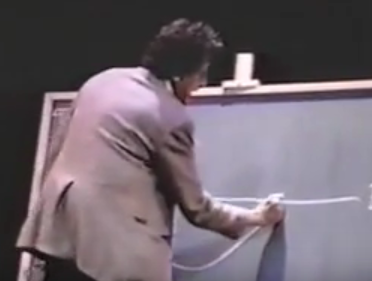Thoughts on the Shape of Stories
You may not have climbed K2 yesterday, or sold your company, or cured malaria. But well-told, your experiences make an impact on your audience. “The shape of the stories are what matters, and not their origins,” said Kurt Vonnegut in a lecture at Wittenberg University in 1982. 
Drawing on the chalkboard, he wrote GF for ‘Good fortune’ at the top left, and I for ‘Ill fortune’ at the bottom left. Then he drew a “BE” axis, “B” for beginning and “E” for end.
“We call this story Man in Hole,” he said. “But it needn’t be about a man, and it needn’t be about somebody getting into a hole.”
Moving his chalk from the left to the right side of the board, he drew a curve going lower and lower – as things get worse and worse, until the character hits rock bottom. The bottom! The innermost cave. Nearly impossible to get out of.
But then, all is not lost. Something happens. A change occurs, some insight, or some helper arrives, and things turn around. Vonnegut drew the curve moving up again, proceeding to the right, rising back to the original height. All is well again.
The lesson took all of three seconds.
“Somebody gets into trouble, gets out of it again. People love this story! They never get sick of it!”
This change of state is simple, a form of the hero’s journey that is relevant to your every day challenges and messages. It is also critical as you gather and shape your own stories. Trouble gives us suspense, which releases dopamine, and further connects us to your journey. The turnaround then leads to a necessary evolution, a lesson, and/or a key change in how you see the world – and how others may see it too.
The best stories, as Vonnegut depicts, draw us deep enough into the hole so they grab our attention – but not so deep to where it is impossible to climb out.